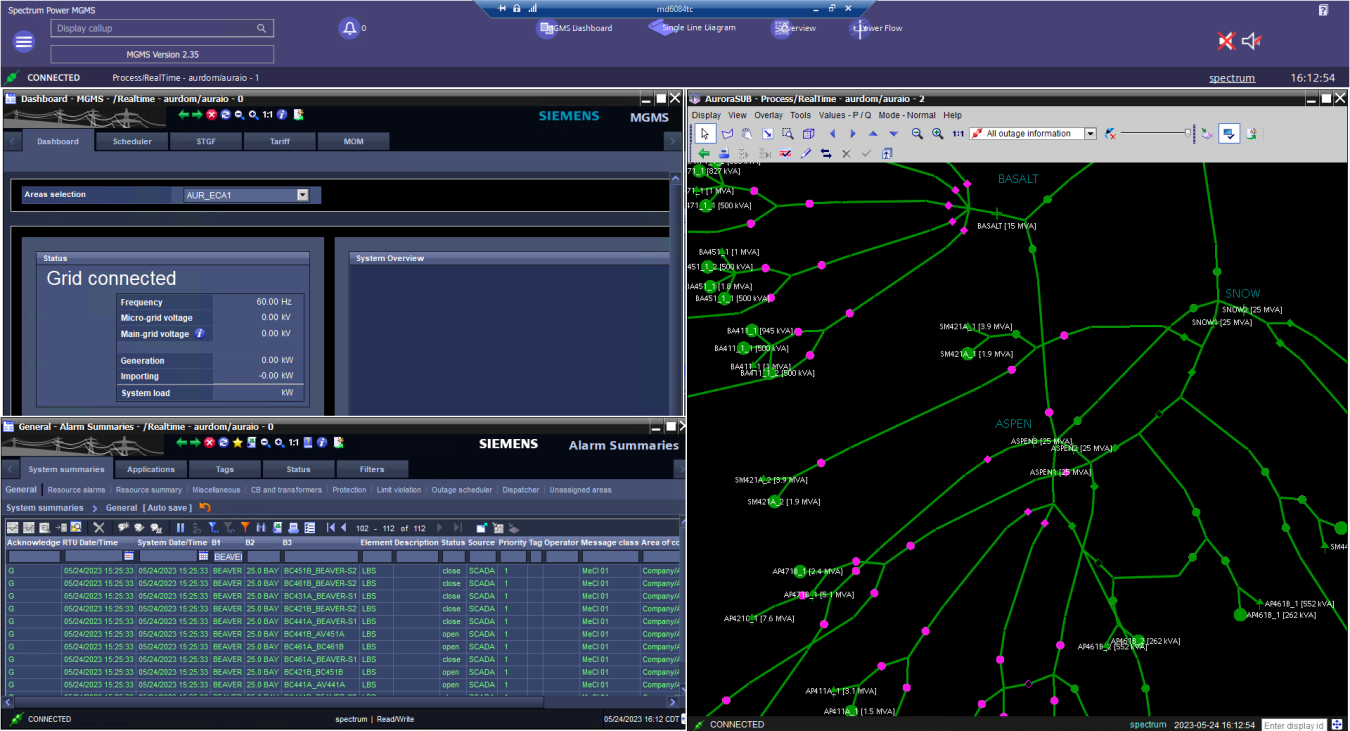With a $5 million award from SETO, Siemens develop a three-layer energy management system for microgrids that helps secure both microgrids and the larger electric grid against physical threats and cyberattacks.
Solar Energy Technologies Office
July 26, 2023
When power outages happen, this energy management system allows for fast reconfiguration of distributed renewable energy resources to turn power back on faster than before.
Microgrids are localized electric grids that can disconnect from the main grid to operate autonomously, even with the larger grid is down. While microgrids are still rare—as of 2022, about 10 gigawatts of microgrid capacity was installed in the U.S.—interest in renewable energy microgrids is growing rapidly. Now, thanks to a research project with Siemens Corporation, new technologies enable microgrids to work together, further increasing their potential to support resilient energy systems.
As natural disasters become more common due to climate change, and as more Americans power their lives with solar energy and other distributed energy sources, advanced microgrid technology like this will become an increasingly important tool to ensure reliable electricity.
Siemens received a $5 million award from the U.S. Department of Energy (DOE) Solar Energy Technologies Office (SETO) in 2019 and contributed $1.4 million cost share to develop a three-layer energy management system for microgrids that helps secure both microgrids and the larger electric grid against physical threats and cyberattacks. With project partners National Renewable Energy Laboratory, Columbia University, and Holy Cross Energy, the team built a testbed connecting multiple microgrids to validate the microgrid control and integration technology with commercial energy management systems.
The first layer of the energy management system works at the distribution system level to provide situational awareness of the local grid at any given time. That includes forecasting the availability of energy resources, so grid operators know how much power generation to expect from solar and other distributed energy resources, allowing them to make informed decisions to balance the electric load. When power outages do happen, the first layer also allows for quick reconfiguration to turn power back on faster than before. It can even detect and identify the exact location of cyberattacks before they have any impact on the system by implementing appropriate mitigation measures—like disconnecting attacked assets.
The second layer allows distributed energy resources to cooperatively maintain electric service without central control. Even if an event such as a cyberattack knocks out the control room, microgrids can effectively talk to each other to determine the health of surrounding microgrids and chip in with the energy they’re producing if needed. This layer is also able to maintain a basic level of power supply to critical loads, like power for hospitals and fire stations.
The third layer enables autonomous restoration of the power system without human intervention through the use of grid-forming inverters. In the project’s testbed, researchers were able to use 24 grid-forming inverters to restart the simulated grid after it had been knocked completely offline—a process known as blackstart. The team successfully resynchronized four microgrids, despite short circuits and large loads, and were then able to restart the entire grid.
The built-in intelligence of this three-layer control architecture is unique because it enables the grid to function without human intervention, greatly reducing the amount of time it takes to reestablish electric service after a blackout from hours and days to just minutes.
This DOE-funded technology is now being rolled into the larger commercially-available Siemens’ Spectrum Power Microgrid Management System and Microgrid Control platforms.
Learn more about SETO’s systems integration research and how systems integration technologies work.

